Structure and function of cell and cell organelles
swaraj barik
#poet #writer I live with pride and self-respect.Writing is not my profession but my addiction . Medical Consultant,NursingStaff onlinemedical tutor
Brief information about the Structure & function of cell organelles
Cell as the Basic Unit of Life
Living organisms, from microscopic unicellular beings to complex multicellular organisms, share a common structural foundation. The cell is recognized as the smallest structural and functional unit of life. The study of cell structure and function is known as Cytology.
Cell Wall
The cell wall is a rigid, protective, and supportive layer surrounding the plasma membrane, found in plants, bacteria, fungi, and algae.
Key Features of the Cell Wall:
First observed by Robert Hooke in 1665.
Thickness varies from 0.1 µm to 10 µm.
Composed primarily of cellulose, hemicellulose, and pectin in plants.
Consists of three layers:
Primary wall (thin and elastic).
Secondary wall (multilayered and strengthened by lignin).
Middle lamella (acts as a cementing material between adjacent cells).
Functions:
Provides shape and mechanical support to the cell.
Acts as a filtering mechanism.
Prevents over-expansion and bursting due to osmosis.
Cell Membrane (Plasma Membrane)
The plasma membrane is a thin, semi-permeable, elastic, and regenerative structure that controls the movement of substances in and out of the cell.
Key Features:
Termed "cell membrane" by Nägeli and Cramer.
Composed of lipids and proteins, forming a lipoprotein bilayer.
The plasma membrane and all organelle membranes collectively form biomembranes.
Models of Plasma Membrane:
1. Sandwich Model (Danielli and Davson, 1935)
Describes the membrane as a trilaminar lipoprotein structure.
Consists of:
Inner and outer protein monolayers.
A middle phospholipid bilayer.
Referred to as a "protein-lipid-protein" sandwich.
2. Unit Membrane Model (Robertson, 1959)
Proposed by J. David Robertson.
Describes the membrane as trilaminar with varying lipid-to-protein proportions (1:0.8 to 1:4).
Functions:
Selective Permeability: Regulates the entry and exit of substances, maintaining homeostasis.
Cell Recognition & Communication: Glycoproteins and glycolipids act as receptors.
Protection & Structural Support: Maintains cell integrity.
Cytoplasm
The cytoplasm is a gel-like substance between the plasma membrane and the nucleus, consisting of the cytosol and organelles.
Functions:
1. Provides a medium for cellular functions.
2. Facilitates the exchange of materials between organelles.
3. Involved in biosynthesis (proteins, nucleotides).
4. Aids in the movement of organelles.
Cytoskeleton
The cytoskeleton is a network of protein filaments that extends throughout the cytoplasm, providing shape and movement to the cell.
Types of Cytoskeletal Structures:
Microfilaments (thin, made of actin and myosin; involved in movement and cell division).
Intermediate Filaments (thicker than microfilaments, provide mechanical support).
Microtubules (largest, hollow tubes made of tubulin, form the centrosome).
Ribosomes
Discovered in 1955 by George Palade.
Granular particles composed of ribonucleoproteins.
Two types:
70S Ribosomes: Found in prokaryotes, mitochondria, and chloroplasts.
80S Ribosomes: Found in eukaryotic cells.
Endoplasmic Reticulum (ER)
The ER is a network of membrane-lined channels throughout the cytoplasm.
Types of ER:
1. Rough ER (RER) – Studded with ribosomes, involved in protein synthesis.
2. Smooth ER (SER) – Lacks ribosomes, involved in lipid metabolis
Golgi Apparatus
Discovered by Camillo Golgi in 1898.
Found in all eukaryotic cells (except sieve tubes of plants, sperm cells of bryophytes, and RBCs of mammals).
Compose of cisternae, tubules, and vesicles.
Functions:
Modifies and packages proteins.
Produces lysosomes.
Synthesizes glycoproteins and glycolipids.
Mitochondria
Known as the "Powerhouse of the Cell".
Contains two membranes:
Outer membrane (smooth).
Inner membrane (folded into cristae to increase surface area for ATP production).
Site of cellular respiration and ATP synthesis.
Nucleus
The nucleus is the control center of the cell.
Key Features:
Surrounded by a nuclear membrane with nuclear pores for material exchange.
Contains chromatin (DNA-protein complex), which condenses into chromosomes during cell division.
Houses the nucleolus, which synthesizes ribosomal RNA (rRNA).
Centrosome
Also called the "microtubule organizing center".
Plays a crucial role in cell division (mitosis).
Contains centrioles, which help in spindle fiber formation.
Lysosomes
Discovered by Christian de Duve in 1955.
Found in animal cells, rarely in plants and fungi.
Originates from the Golgi apparatus.
Types of Lysosomes:
1. Primary Lysosomes – Contain inactive enzymes.
2. Secondary Lysosomes – Formed by the fusion of primary lysosomes with vesicles for digestion.
3. Residual Bodies – Contain undigested material, sometimes expelled from the cell.
4. Autophagic Vacuoles – Digest worn-out cellular components.
Functions:
Intracellular digestion (breaking down biomolecules).
Autophagy (recycling damaged organelles).
Defends against pathogens.
Conclusion
The cell is the fundamental unit of life, forming the basis of all living organisms. Every organelle within the cell has a specific function that contributes to the overall growth, survival, and functionality of the organism. Understanding cell biology helps us appreciate the complexity of life
